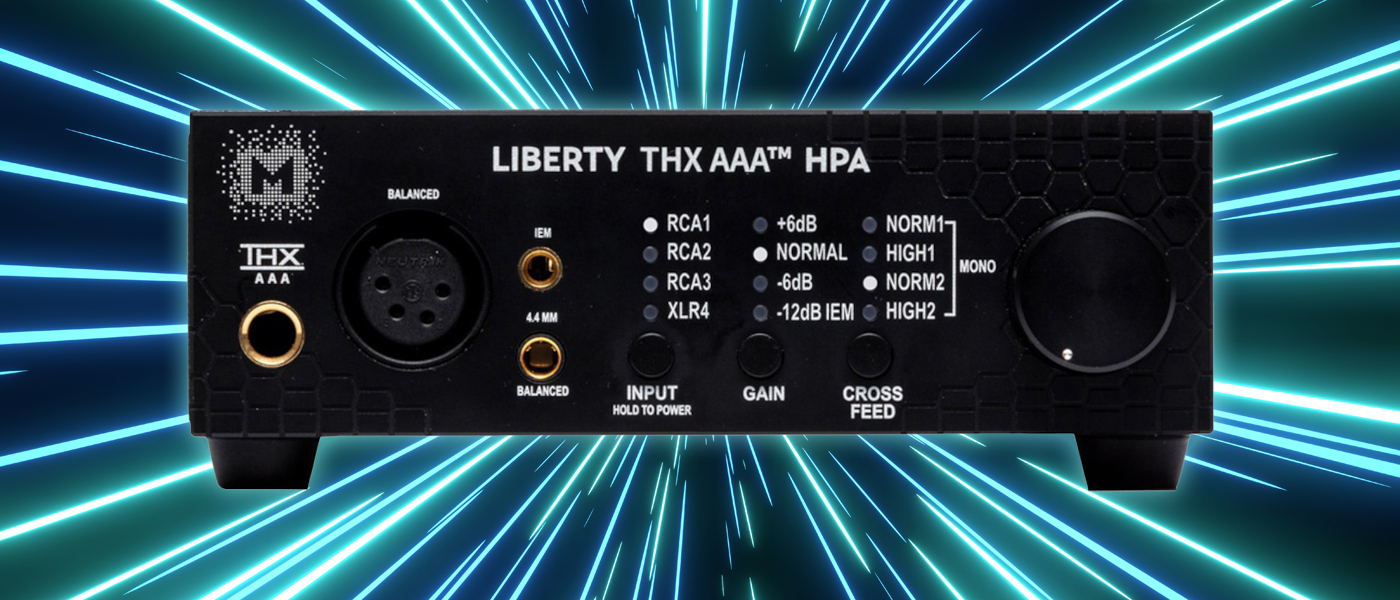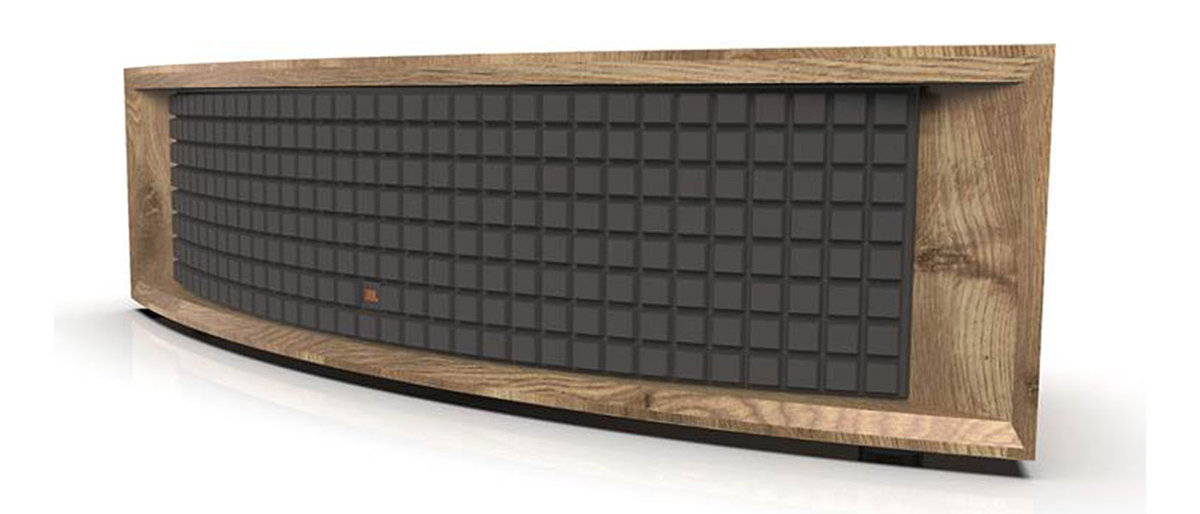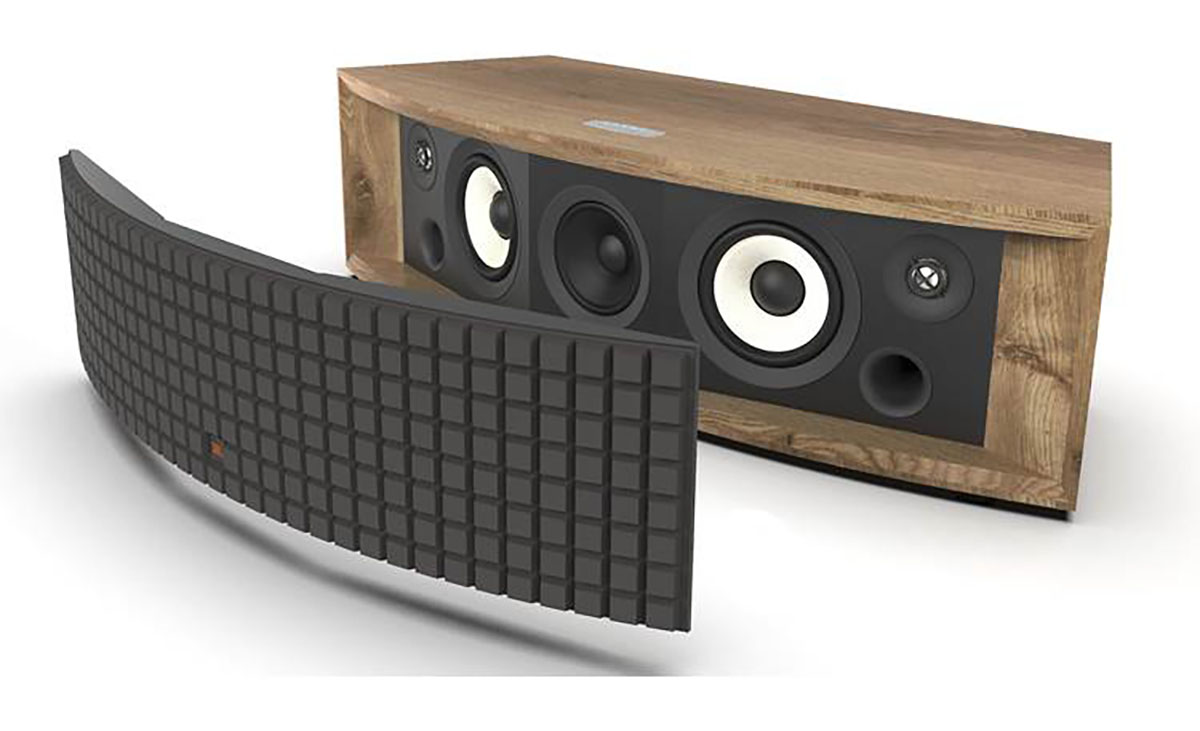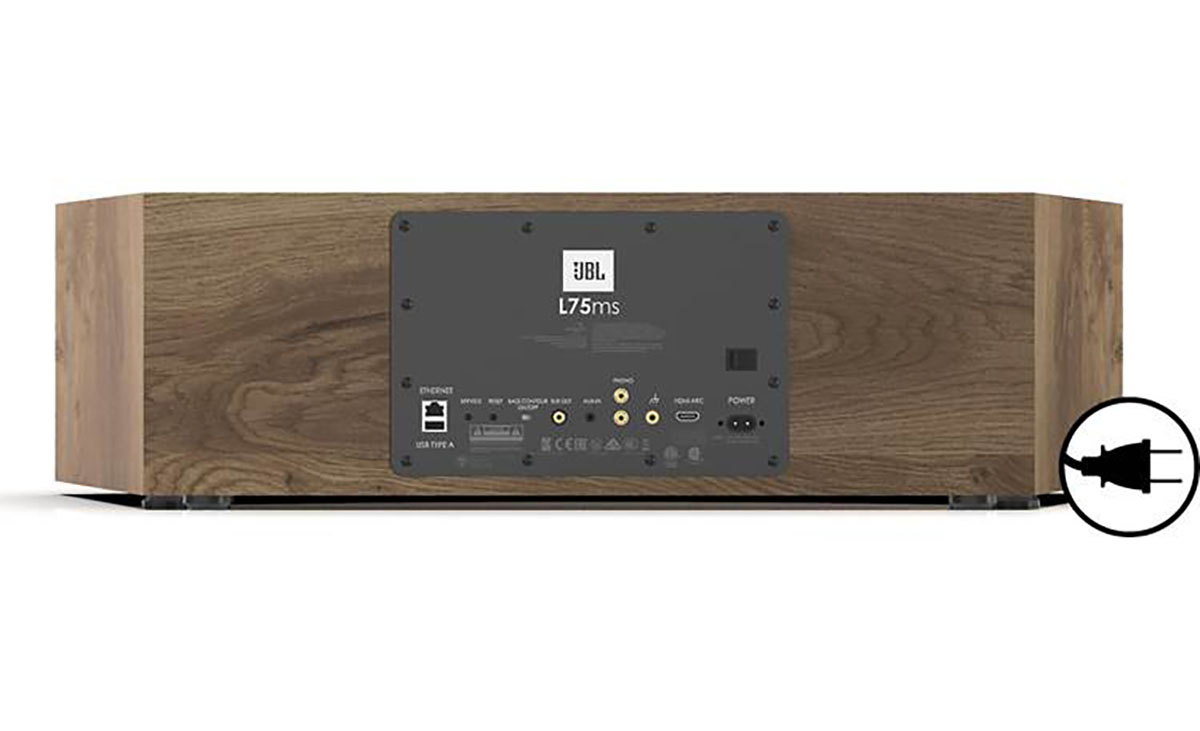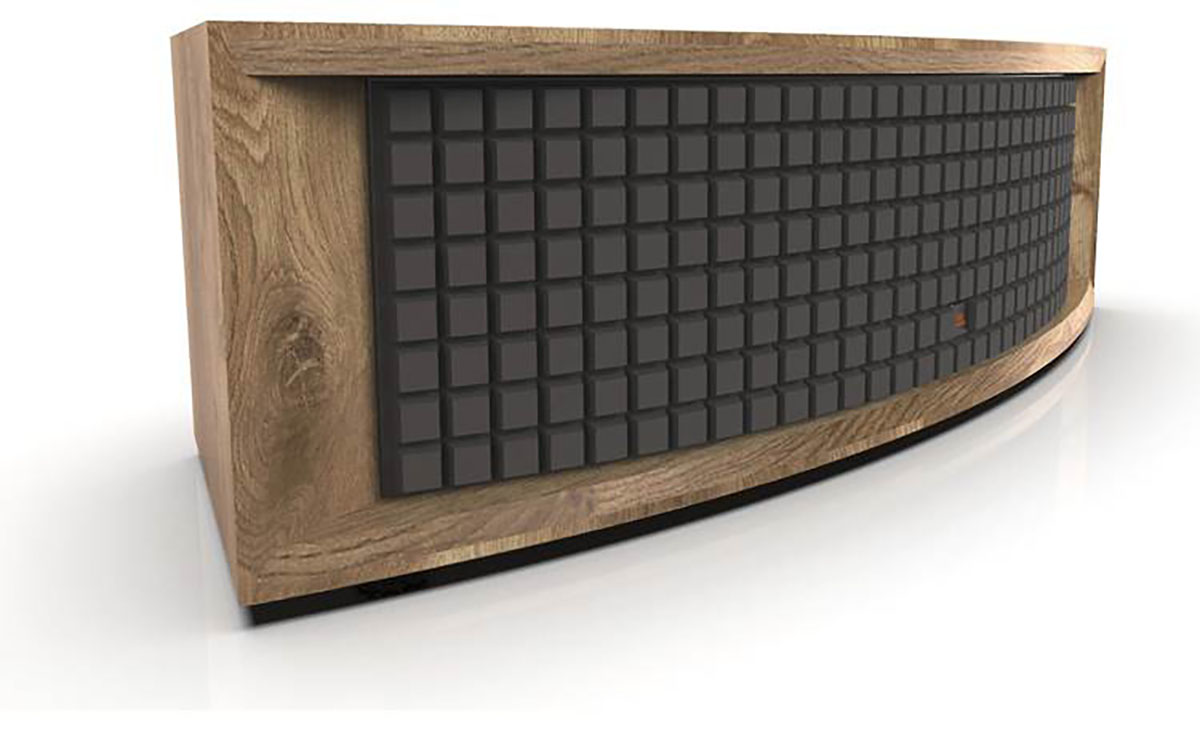The JBL L75ms brings back fond memories of ‘70s vintage JBL L100, L65, and other classic designs and combines them with Bluetooth and Network connectivity (wired and wireless) along with an HDMI ARC input to bring to us one remarkably versatile music maker and movie soundtrack reproducer. It even offers a subwoofer output for fixed installations while remaining a stout portable music system for traveling. The question is: how does it sound? Let’s find out together!
JBL L75ms Music System Highlights
- High-performance integrated music system.
- Classic JBL Style featuring Natural Walnut everywhere.
- Five-driver design with dual 5.25-inch woofers.
- Dual 1-inch aluminum tweeters.
- Central 4-inch midrange driver.
- 350W total system power.
- Google Chromecast, Apple AirPlay 2.
- Bluetooth wireless audio.
- Networking wireless and wired.
- HDMI ARC, Moving Magnet phono, and 3.5mm auxiliary inputs.
- Selectable Soundfield Expander and Bass Contour controls.
- Satin natural walnut furniture-grade wood veneer finish.
- Black Quadrex foam grille in classic JBL style.
- Wireless remote and MusicLife app control.
The 1970s were a golden age for audio. The typical system consisted of a stereo receiver, a pair of speakers made from real wood, and a turntable. The receiver itself included an AM/FM tuner. The FM portion allowed audiophiles, for the first time, multiple sources of high quality that “streamed” over the FM airways. A decent system back then would typically cost around $500-600 (about $3000 in today’s dollars) for something that would deliver bass to below 50 Hz, a nicely finished cabinet, and no remote control. It was also the type of system that turned the purchaser into a full-fledged audiophile with aspirations of upgrades as the budget allowed.
The JBL L75ms Music System may not LOOK like a modern version of that now 50-year-old system, but let’s look deeper. The L75ms offers streaming via either your home network (wired or wireless), smartphone and its services (think Spotify, Qobuz … et all), and Bluetooth. It delivers bass into the 40 Hz range, can play quite loudly without distortion, and adds a few features we could not get in the ‘70s. One of those is a dedicated subwoofer output, which allows one to upgrade the L75ms into a full-range system.
As it requires fewer parts than the system did 50 years ago, adjusted for inflation, it costs about half as much as that entry-level system did in 1975.
Type:
Streaming tabletop loudspeaker system.
Low-Frequency Drivers:
Dual 5.25″ (133mm) Pure Pulp cone woofers.
High-Frequency Drivers:
Dual 1″ (25mm) Aluminum dome tweeters with waveguides.
Midrange Driver:
4″ (100mm) pure pulp cone midrange.
Amplifier Power:
125W RMS per woofer.
25W RMS per tweeter.
50W RMS for center (350W RMS total).
Sound Controls:
Speaker placement compensation, selectable sound-field expander.
Wireless Inputs:
Wi-Fi streaming, Bluetooth 4.2.
Wired Inputs:
HDMI ARC, Ethernet, phono (MM), 3.5mm.
Resolution:
up to 32-bit, 192kHz.
Frequency Response:
45Hz – 25kHz (-6dB).
Maximum SPL:
106dB @ 1m.
Subwoofer Output:
2V RMS with auto-sense/engage HPF.
Enclosure:
Front-ported tabletop in satin natural walnut furniture-grade wood veneer.
Grille:
Black foam Quadrex grille.
Dimensions with grille:
8.5″ H x 31.1″ W x 11.3″ D.
Product Weight:
35 lbs. (15.9kg).
Warranty:
5 Years.
JBL L75ms Music System Price:
$1,500
Website:
Company:
SECRETS Tags:
jbl, l75ms, music system, Bluetooth, wi-fi, Bluetooth speaker, speaker system, speaker, streaming
- JBL 4329P Studio Monitor Review
- JBL Tune 710BT Wireless Headphones Review
- JBL L52 Classic Bookshelf Speaker Review
The L75ms Music System offers up a rather innovative way of creating a credible sound stage from a single box system. Think of it as a pair of speakers with 5.25-inch woofers and 1-inch dome tweeters that are angled away to the left and right on the subtly curved front panel of the system. A dedicated 4- inch midrange then ‘centers’ the speaker, allowing for a solid stereo experience both on and off-axis.
The L75ms also benefits from each speaker having its own dedicated amplifier: 125 watts to each woofer, 25 watts to each tweeter, and 50 watts to the pulp cone midrange. This allows each amp and speaker to operate within its bandwidth without the compromise of a passive crossover network. This will result in a ‘cleaner’ sound when compared to most relatively inexpensive speakers.
The cabinet is testimony to JBL’s heritage. The Walnut finish is beautiful, as are the shapes and tapers of the front baffle. This is a wireless speaker that will look perfect in a variety of domestic settings, from a log home in the country to a luxury apartment in Manhattan.
The L75ms’s connectivity options are abundant with both wired and wireless Ethernet, Bluetooth, HDMI ARC, and a 3.5mm input for personal music players. One could even use an adapter to hook up a CD player to the 3.5mm input. The built-in RCA inputs for the moving-magnet phono stage will make vinyl owners happy.
One final note is the Sound Field Expander (SFX) which is a switchable option that is designed to expand the apparent sound stage beyond the native soundstage that the speaker system can do on its own. This is part of the integrated DSP that manages the individual power that each driver receives from its dedicated amp. It also allows for some shaping of the signal from each driver in its domain and prevents the system from clipping, or overloading. JBL has done an excellent job in making the L75ms as close to bulletproof as possible.
Secrets Sponsor
This review is going to concentrate on the sound quality of the L75ms Music System. For ease of use, I set both the Bluetooth and Wi-Fi input with an Android smartphone to play music tracks from Spotify. The HDMI ARC input was used for movies from a 75-inch, 4K Samsung television. The 3.5mm and turntable options were not used, but based on my experience with the rest of the system, there is little doubt that both would be equally easy to set up.
A special note for setting up the Wi-Fi; JBL offers instructions in an excellent online manual which are as follows:
Wi-Fi Connection with Google Home
1. On your mobile device, download and open the Google Home App.
2. Follow Google Home instructions to add devices.
3. Follow the prompts for adding devices. Note: We recommend giving the speaker a common name so that it can be easily found for streaming later.
One issue that has been mentioned about the L75ms is that it is rather tall to be used as a soundbar. A simple riser for one’s television or a dedicated center channel stand solves that problem. In our case, the screen has several inches of available shelf space underneath.
From unboxing to completion, the setup took less than 15 minutes. The Bluetooth pairing was a snap, as was the ARC setup.
As mentioned earlier, JBL has wisely included a subwoofer output on the back panel of the L75ms. They also have a subwoofer in the Classic line called the L10cs, which matches the black walnut of the L75ms. It uses a 10-inch driver in a down-firing cabinet and will add a nice foundation to the L75ms for those who want deep bass. As we did not have an L10cs subwoofer available, a 10-inch subwoofer DIY project that I built last year was substituted. It is safe to conclude that the L10cs would provide a substantial improvement over the subwoofer I used in this test.
Let’s start the listening sessions with the L75ms operating alone. We will add the DIY subwoofer later for some final notes.
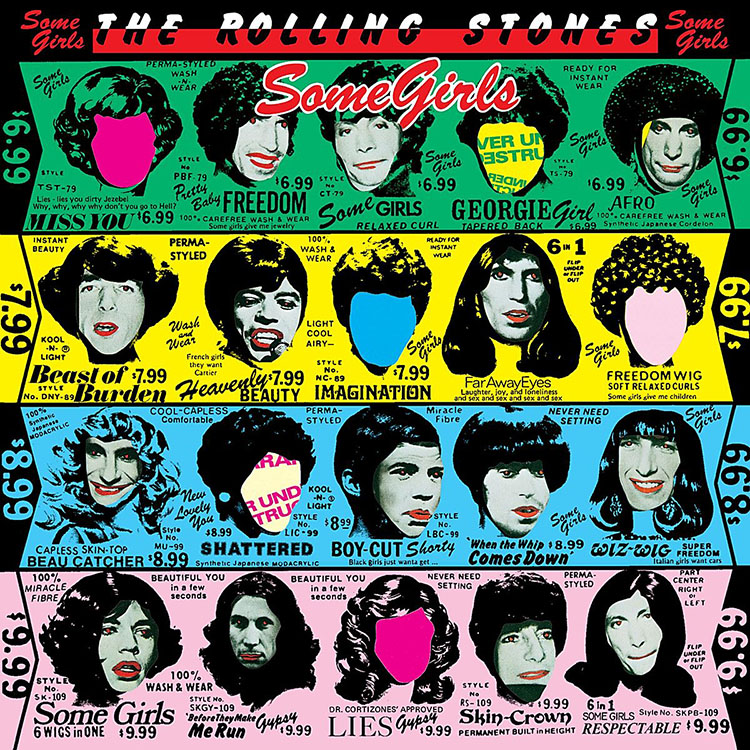
The Rolling Stones: “Some Girls”
‘Some Girls’ was released on June 9, 1978, the day after my high school graduation. I purchased a copy from the local mall record store on the Friday it was released and could not WAIT to hear it on my first stereo: a JVC receiver, a pair of Electro-voice 16B speakers, and a Technics turntable (with Audio- Technica Cartridge). The opening song was the first hit from the album: ‘Miss You.’ I loved the sound that system played those 45 years ago. Since the L75ms is a throwback to the look of those systems, it was only natural to play The Stones through it.
On its own, the L75ms started ‘Miss You’ with a nice, hard-driving bass drum. Mick Jagger’s voice and its raw appeal were immediately evident. The bass was tuneful, if not quite as deep as I had heard on that system so many years ago. Those speakers in that system, the Electrovoice 16B’s, sported a sealed 12- inch woofer in each cabinet. Adding the DIY sub into the mix brought that last octave and added the authority to the bass line that I crave. Keep in mind, I have always been a bass-head, and the L75ms did a fine job on its own. The L75ms in our room was also lacking any boundary reinforcement in its placement.
Does the subwoofer help? Let’s just say it’s a great option to have, but it isn’t necessary for a terrific listening experience.
Additional tracks of note are ‘Far Away Eyes,’ in which Mick’s sarcasm in the vocals came across with aplomb. Did you ever think Keith Richards could twang a guitar? The title track ‘Some Girls’ starts with a nice attack on the snare drums, and the JBL system hit it out of the park with a sharp leading edge and believability. The benefits of the DSP and dedicated amp for each driver were evident with this ‘70s favorite. As a side note – does anyone think this album could be made in today’s world with all the angst about offending people? Take a listen to Some Girls if you want a lesson in not caring what people think about your lyrics.
‘Beast of Burden’ shows off how well the band can harmonize, along with that excellent bass line, and once again, the L75ms delivered a healthy dose of nostalgia. We closed out with ‘Shattered,’ which showcases Mick’s ability to sing while shouting simultaneously, and again the 5.25-inch woofers and that 4-inch midrange were powerful and clean.
As for the SFX feature – I found it was a nice enhancement to the overall soundstage when engaged, including a wider stereo image. With that in mind, it was left on for the remainder of the review.
This system can rock, for sure. Can it jazz?

David Sanborn: “Upfront” (CD)
‘Upfront’ is another favorite of mine for listening tests. If you are not familiar with Mr. Sanborn, his music is a modern jazz style with lots of swing. This disc opens with ‘Snakes,’ which has a groovy opening bass line, keyboards, and guitar leading into a strong entrance by Sanborn’s saxophone.
The L75ms handled this opener with excellent dynamics and clarity – the type that had me reaching for the remote control to turn it up. Even without the subwoofer engaged, the bass was solid and had a great sense of pace. The sax had lots of bite when needed, and all the warmth when called on for this side of the sax talents. Trumpets were also quite powerful and at no time was volume lacking. I was starting to wonder what this unit would be like on a stout mantle over a fireplace. Hey – we are a northern city, and winter weather will be here soon!
‘Ramblin’ is another stellar track on this hour-long music treat. It opens with percussion out of a silent background (think of it as drums & percussion a cappella), then adds a nice bass line before the brass section kicks in. Unlike much in the arena of modern jazz, it’s another song with a groove line that has one toe-tapping and is even danceable if one has talent (full disclosure, this reviewer does). There’s a symbiotic relationship between Sanborn’s sax, the percussionist focusing on the rim of the snare and the bassist hitting hard notes. The use of separate amps for each driver pays dividends here. The J75ms sounds a lot larger on ‘Ramblin’ than something anchored with 5.25-inch drivers should.
This entire CD is a series of wickedly fun songs, but let’s explore one more by name. ‘Topic’ is another gem that is high-energy jazz fusion that tends to go asymmetrical in its delivery for a few notes to throw one off, then hip hops right back into an urban funk that is irresistible. Shades of Heatwave’s 1978 song ‘Grooveline’ comes to mind. It’s the type of song in which one can see a dance troupe performing a choreography to, and doing so with lots of energy.
Overall, David Sanborn and JBL have made for some wonderful jazz together. It’s time to challenge the L75ms with some Math Rock.
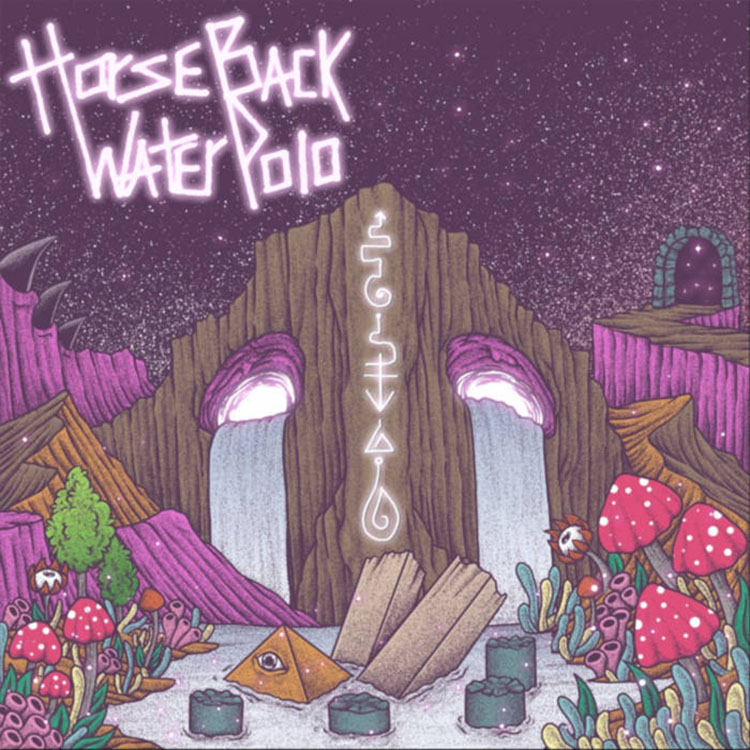
Horseback Waterpolo (Spotify)
This is the first album recorded by a local band, and the album (as did Led Zeppelin over 50 years ago) and band share the same name. The style of music is called Math Rock – most Baby Boomers and Gen Xers never heard of it. A lot of the music style, rather than being rhythmic, is asymmetrical. Math Rock will hit you with notes in a manner that is unexpected, then it will go back to traditional rock again.
The disc starts with ‘Adderall-Nighter’. A kick drum opens, and then the guitar joins the snare drum. Harmonizing vocals follow, and it’s immediately clear that this is a well-recorded album. Then it gets busy – the asymmetrical guitar against the drumming combines with the vocals in a manner that … well … try air drumming to it. It’s hard-driving rock with attitude, and the L75ms kicks out the jams with ease.
Track 2 is ‘Only God Can Judge Judy,’ which has a bit of old-fashioned heavy metal flavor to it. The guitar work is lightning-fast, and the JBL proves how agile the system is. The drum work from Jacob Hollo is so savage that memories of Keith Moon come to mind, and the bass drum is presented with excellent weight and pace by the dual 5.25-inch woofers. Eli Chase’s vocals take center stage halfway through the song, and we now get to appreciate that 4-inch full-range driver. Math Rock, by nature, tends to obscure vocals a bit (as did metal back in the ’80s, right?). The L75ms are quite capable of bringing the raw vocals to life.
We then go to ‘The Ballad of Uncle Ted,’ which opens with a gentler drum and guitar rift, only to get into some serious asymmetrical guitar work in the body of the song. This requires a very quick driver, and again the JBL system proves to be a high-quality monitor-style speaker (pair) wrapped up in an attractive single cabinet.
All eight tracks of Horseback Waterpolo’s inaugural album are a challenge for any speaker system, and the fourth track is well worth the mention for its singular challenge to the L75ms speaker system. It epitomizes Math Rock to the highest degree on the album, flowing from a natural rhythm to a hard- driving guitar/drums/singing that makes a lot of Ozzy Osbourne seem mainstream. The vocals are raw and inspired, the drum work frantic and loud and the guitar work nothing short of angry. Once again, the JBL system brings all the emotion to the surface with gravitas.
The L75ms system can rock. It can jazz. And JBL brings the party while looking cool in your room.
Next up are a couple of movies with the DIY subwoofer added into the mix.

The Dark Knight
Released in 2008, ‘The Dark Knight’ is one of the finest superhero movies ever made. It is also an audio fest of music and effects. With the subwoofer engaged, and SFX turned on, we fired up the L75ms. That opening scene is a perfect scenario for evaluating a home theater speaker. With two boxes (the L75ms and subwoofer), we were treated to a wonderful experience. The dialogue between all the clown-face villains pans across the room with a much wider effect than one would expect. The gunshots hit hard, and the overall feel is a system with high limits in terms of SPL being delivered clean.
Later, when The Batman is configuring the 50mm shells, the percussive effect is powerfully felt. JBL’s heritage in making cinema speakers does not go unnoticed in the L75ms system. Of special note is how well Christian Bale’s vocals come through. Many soundbars lack the ability to deliver Batman’s vocals with clarity, but the L75ms has no problem.

Bram Stoker’s Dracula (1992) 4K
This film was selected because it has a plethora of scenes that require a system capable of delivering everything from whispers to crescendos, and from vocals to huge halls filled with reverb.
In the opening sequence, the battle scene in which Vlad the Impaler vanquishes his foes with savagery, the macro-dynamics come through with flying colors. Later (as in centuries later), when Harker (Keanu Reeves) first arrives at the Count’s castle, he is in a huge hall with Dracula. While the L75ms cannot quite match a five-channel surround system, the angle of the drivers combines with SFX to give a pretty good slice of that surround feel.
The scene in which Dracula’s Brides are seductively whispering to Harker to lie back and join them is hard for most speakers to get right. The JBL system does an admirable job of presenting these whispers with clarity.
Several nights of movie watching have left the impression that this is a very high-quality product that can fill many needs. This is especially noteworthy when one considers my usual high-end listening is done with a system costing north of $50,000 and a home theater system north of $30,000 in audio components.
Secrets Sponsor
JBL’s L75ms Music System is a versatile product that is equally competent as a soundbar or an audiophile speaker and fits into almost any décor.
- Gorgeous cabinet and natural walnut finish.
- HDMI ARC input to mate with modern televisions.
- Wired and Wireless WiFi that is a snap to set up.
- Bluetooth sound quality is excellent.
- Subwoofer output.
- The factory reset button on the back of the unit helps when traveling.
- Clean sound even at high volume levels.
- SFX expanding sound stage option.
- Center 4-inch speaker that locks in the whole system.
- A remote control of the same quality as the speaker system.
The JBL L75ms audio system has many talents. When it arrived, it only took about 15 minutes from start to finish to set up Wi-Fi, Bluetooth, and HDMI ARC using the cable that normally attaches to our pre- amp processor.
Once set up, it provided hours of both music and movie enjoyment with an ability to ‘get loud’ that most sound bars lack. It can act as a soundbar but is much more user-friendly and system-finishing than any I have experienced. Even without a subwoofer, the actively driven 5.25-inch woofers, dome tweeters, and 4-inch midrange combine for a monitor-style system with a better-than-expected sound stage and imaging.
Adding a subwoofer (and I really would love to hear and see the L75ms with the matching L10cs subwoofer) takes the L75ms to an even higher level of both music and move enjoyment.
JBL set out to create a system that looks more like art than audio, sounds great, and can handle a variety of sources without a lot of fuss. In addition, there was an apparent goal of being able to upgrade the sound by adding a subwoofer for fixed installations. They also wanted to give the system some portability along with the performance that would allow it to be a primary system for the buyer or a secondary system that can even be taken along for a trip. With the L75ms Music System, JBL has managed to check off all these boxes in one relatively affordable product. It’s easy to set up, and a cinch of a recommendation for anyone thinking in terms of a lifestyle system. To the folks at JBL, congratulations on a job well done.


